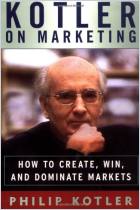
Book
Marketing Strategy
Overcome Common Pitfalls and Create Effective Marketing
Recommendation
Too many marketers prioritize quick-win tactics over long-term strategy and vision, says Jenna Tiffany. Apply her eight-step framework to trigger sustainable growth and success, and embrace an attitude of continuous improvement and development. Gleaning insights from sources ranging from market research to interviews with leaders at companies such as Google and Mailchimp, Tiffany aims to empower marketing teams to help their organizations strategically achieve their objectives and better connect with target audiences.
Summary
About the Author
Fellow at the Institute of Data and Marketing Association Jenna Tiffany is the founder and strategy director of the digital marketing consultancy Let’sTalk Strategy.
















Comment on this summary